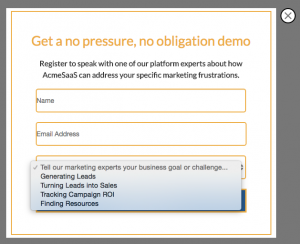The mantras ring out louder each passing day…
“We need to get better at this!”
“We must be more efficient in X Y Z!”
“We must look at ways to be more productive!”
“We need to be more creative and innovative!” …and there are more…
In most day-to-day work situations we are usually tasked with or required to deliver an outcome – a tangible, value-adding deliverable.
Whether we are senior managers / decision-makers, or any other member of staff at any level within the organisation, we all have one main “journey” or “pathway” in common – we are expected, and indeed in most cases paid, to think, prioritise, decide and deliver!
Sometimes that journey or pathway is a quick and relatively easy task or activity where we can execute it fairly quickly and effortlessly. On other occasions, tasks, activities, objectives, projects, etc, can be more complex, multi-faceted and will require considerable time, effort and a large degree of careful planning, involvement, control and management.
However, invariably it all boils down to “what is required and how best can I achieve this to guarantee maximum success?”
By using mind mapping software you are presented with many models and approaches for problem solving, planning, brainstorming, running meetings, executing projects, etc. Each one of these models is designed to deliver tangible, results-driven outcomes and deliverables.
One such model is geared to act as a “Road Map” or “Pathway” to success. Regardless of size, complexity, timescales, etc, the pathway is mapped so that each stage is well thought through, the bases are covered, we tap into knowledge, experience and creativity, the overall efficiency of the process and the journey is maximised and we all have an outcome that meets or exceeds expectations.
Such models are of course not new and there are many “variations on the theme”. However, the main issues and differentiators for us are: Do we execute it all successfully each time? Is the approach or process transferable? Can we guarantee success each and every time? Is all of this adding value and benefit and are we gaining in terms of increased productivity and efficiency?
The starting premise is simple – every task, activity, objective, etc, has a starting point and an end point (e.g. “What is our “A” (starting position) and what is our “B” (end point)?). We then map a pathway that will enable us to fully understand each and every stage of that journey or “Pathway to Success” – whatever we deem or agree “success” should be.
We sometimes refer to this in some of our consultancy assignments as a “Model of Excellence”. The example map is such a model, covering the above overview of the “Pathway to Success”…

Whilst each and every instance is uniquely different, I have attempted to describe short “pointers” for each stage of the Pathway and whilst is appears to be a staged approach with separate identifiable stages, it should be noted that there are overlapping areas and dynamics that make this a very fluid model in its actual deployment…
1. Aims / Objectives
Before moving on to solution mode, starting to document the process, carry out any analysis, or kicking-off a project, we need to step back and agree the all-important statements that define and articulate the “What” it is we’re trying to achieve; and “Why” we’re doing this. A clear, shared and communicated sense of purpose ensures that those involved have a solid foundation before embarking on any journey or pathway to success / excellence.
2. Success
We need to take an in-depth look at the deliverables and outcomes – in terms of “what does success / excellence look like.” This could be a new process; corrective action as a result of error or failure; and/or driven by customer requirements. The “Pillars” or key elements and priority areas need to be identified and each looked at in terms of what excellence looks like for each. Putting it another way, as a question: “If you don’t have a feel for success / excellence in the key elements of your priority areas and their outcomes, what is the purpose?”
3. Current Situation
Now we have a clear focus on what we’re trying to achieve and where we initially see our “A” and “B” points being, we now need to “prove” the current situation around this problem, issue, corrective action, or whatever it is we’re trying to solve. We would typically use tools and techniques to paint a true picture of the positive and negative aspects of where we see the situation. We should leave no stone unturned and map out strengths, positives, weaknesses, areas for improvement, etc. Similar to the previous stages, it is vital that we have the facts and data of where we are in terms of what works well and what doesn’t work well, before we can even start to think about possible solutions.
4. Road Map
This is the point where, having a clearer picture of the current situation “landscape”, we can begin to map out a “Road Map” that identifies the pathway, beginning at “A” and visualising the key stages to our desired point “B”. This in fact should be an emerging and boundary-free extension to the previous stage. This will be the “building blocks” towards a journey to success. This Pathway should ensure that all the key stages or “Pillars” are covered and is informed by the facts/data uncovered as part of analysing and understanding “current situation.”
5. Obstacles
The reality is that this area emerges organically out of the previous. As part of the practicalities of analysis and mapping the pathway (even just the discussions around current situation), obstacles and barriers to success (the “what’s stopping us”) emerge. The main point or lesson here is that obstacles need to be addressed, separately or organically as part of earlier interventions – we need to identify and have clarity and focus on any aspect, problem or barrier that delays or prevents progress in any of our key Pillars or stages. Not only that, but we need to systematically and relentlessly identify solutions that negate each and every one of them.
6. Action Plan
This is the “bringing it all together” part for me. We now need to be clear on the “deliverables” – the plan of action put in place to ensure that we actually take the right steps and do the right things to move from whatever our “A” starting position is to the “B” point where we all agree we need to be. Action-centred, specific, measurable, time-bound deliverables that are then communicated, monitored and managed through to completion. The Action Plan will visualise, document and commit everything that needs to be done to get to the successful position of “excellence.”
7. Management and Review
It almost goes without saying – with all our well-intended vision of where we need to be, the focus on success / excellence, a clear way-ahead, an extensive and thorough action plan: “How do we know we got there?” The best plans, the best intentions, all need that clarity on how we measure success. What are the success criteria? What are the key performance indicators? What do we need to measure? What and how do we monitor and control not just the outcome and results, but the progress towards that? The other important aspect here is that we need not only to measure the end objectives for the immediate Action Plan but put mechanisms in place to monitor, review and continually improve on an ongoing basis into the future.
(212)






